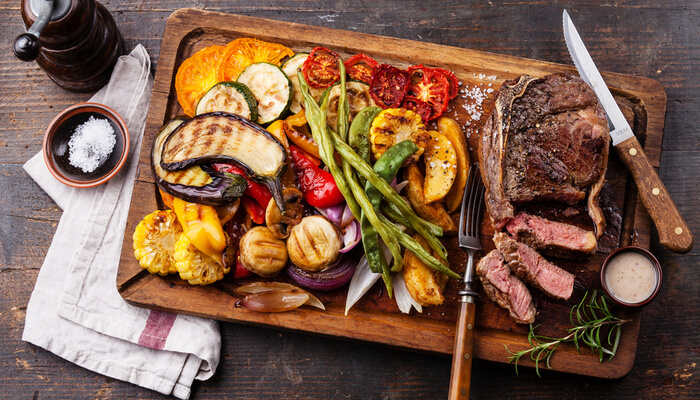Shutterstock
2019 has seen a huge rise in diet trends. Keto, Paleo, and the Mediterranean diet are all taking their place as some of the biggest trends in the past twelve months. But there is one that is gaining steam, and doctors are recommending it more than most others.
It’s the Whole 30 diet, and it’s more of a program than a life-long diet. It’s growing in popularity because you don’t have to eat this way forever, just for 30 days, and people are seeing amazing results that really do last.

The goal for the Whole 30 diet isn’t about losing a ton of weight (Though many people do!), but it’s about changing the way you look at, relate to, and handle food. It’s all about shifting the mentality around what you eat, as well as how much you consume.
For 30 days, the goal is to remove anything that could be considered “inflammatory”, or potentially disruptive to your digestive health. Legumes, processed foods, baked goods, and dairy all make the list, as well as processed sugar and all alcohols. It isn’t for the faint of heart.
Once your 30 days are up, you are supposed to slowly reintroduce these foods back into your diet. The purpose is to see how your body starts processing them again and hopefully get a sense of what works and what doesn’t work for you.
Some people have found they struggle to properly process added sugars, causing them to bloat or their skin to break out. Others discovered that they are seriously lactose intolerant, but their symptoms had been hidden.
The goal with Whole 30 is 3 balanced, “clean” meals a day. But when you take out so many things, what are you actually left with?
You can eat almost all veggies to your heart’s content, and that includes potatoes. So many diets restrict this poor root vegetable, but a baked potato makes a great companion to a dinner! Remember, however, that you can’t add butter or sour cream to it.
Be careful with what meats you eat! Some sausages or jerky will have added sugar or additives, which you want to avoid. Make sure you read the label, and when you’re unsure, just avoid them entirely. Other meats, like chicken and steak, are all good!
All seafood and shellfish are safe. Avoid things like crab cakes, which have a ton of ‘extra’ products in them.
This excellent breakfast staple is still safe, so eat as many scrambled, hard-boiled, or poached eggs as your heart desires.
With the exception of peanuts, which are really a legume and therefore should be avoided, all nuts are safe for snacking.
Rejoice – you can still drink coffee on the Whole 30 diet. However, what you cannot do is add any dairy products or sugar to it. Try unsweetened, nothing-added almond milk, or take this opportunity to start drinking your coffee black.
Some fruits are okay. You’ll want to eat fruits in moderation, and mostly as a treat. The goal with this diet is to drastically cut down your sugar, so eating lots of fruit is going to counteract that.
Here’s the important part: what you can’t eat on the Whole 30 diet.
No dairy is allowed, at all. No milk, buttermilk, or butter. Ghee is the only exception, but it is clarified and a little different.
No drinking allowed! Kombucha, which has trace amounts of alcohol, is fine, but no vodka, gin, or tequila for the next 30 days. Not even for cooking!
If there is any added sugar to something, you shouldn’t be eating it! No honey, agave, Splenda, or stevia allowed. Even things like ketchup or hot sauces have sugar, so make sure you’re reading labels carefully before consuming anything!
This is going to be the hardest for some! No wheat, corn, rice, buckwheat, sprouted grains, or quinoa is allowed on this diet.
No peanuts, soy, or any type of beans. This includes soy sauce, tofu, and even peas!
You should be working on cutting down your processed foods, so you need to avoid anything with MSG or sulfites. Make sure you’re reading the ingredients carefully – MSG is also known as monosodium salt, monohydrate, or monosodium glutamate on ingredient lists!